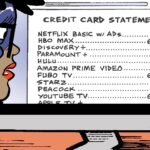Concerns over ads appearing next to extremist YouTube content has led Havas UK, The Guardian, L’Oréal and the UK government to pull advertising spend from YouTube and Google Display Network.
The UK government’s interest in stamping out extremist videos has been brewing for some time. According to a February article in The Times, the UK Parliament first started looking into this issue last year, and it met with Google earlier this week. And Friday it said it had pulled all its ads from YouTube.
In a Friday letter addressed to Google, however, the government’s Home Affairs Committee noted that the extremist group National Action still had videos on YouTube. The letter also cited media reports that advertising still appeared next to extremist content.
The letter, signed by Home Affairs Committee chair and Member of Parliament Yvette Cooper, demanded Google’s “swift reply.”
Havas’ UK division also pulled spend from Google and YouTube, given the UK government’s concerns, and after talks with the tech company broke down.
In a statement to AdExchanger, Havas confirmed it had paused all YouTube and Google Display Network ads for its UK clients, including O2, Royal Mail, BBC, Dominos and Hyundai Kia.
“We have a duty of care to our clients in the UK marketplace to position their brands in the right context,” Havas Group UK chief executive and country manager Paul Frampton said in a statement. “Our teams are working with the brands we represent to select alternative partners where we are confident of the third-party verification and safety guarantees.”
Havas’ moratorium follows The Guardian’s decision Thursday to pull ad spend from Google Ad Exchange and YouTube after the pub saw its ads appear next to content including “YouTube videos of American white nationalists, a hate preacher banned in the UK and a controversial Islamist preacher,” according to a Guardian story.
In a blog post, Google UK managing director Ronan Harris framed Google’s issue partly as one of free speech – but said Google will aim to do better. “We’ve begun a thorough review of our ads policies and brand controls,” he wrote, “and we will be making changes in the coming weeks to give brands more control over where their ads appear across YouTube and the Google Display Network.”
But YouTube creators might push back if Google implements more aggressive brand controls. In September, influencers complained when many of their videos were characterized as ineligible for monetization. It turned out that Google hadn’t cracked down on inappropriate videos, but had made it easier for influencers to see which videos weren’t qualified to show ads.
Despite the backlash in the UK, WPP media-buying unit GroupM did not pull any spend from Google or YouTube.
“We are having individual conversations with each client using social platforms – every one has a separate risk profile and different objectives – we would not be inclined to make any blanket decisions about pulling Google or other inventory, John Montgomery, GroupM’s EVP of global brand safety, told AdExchanger.
In a letter to clients, GroupM encouraged joint cooperation and urged them to deploy brand safety tools and work on the issue with Google: “Join us in working with Google and others to meet our collective brand safety standards.”
Google’s statement to AdExchanger echoed its blog post: “We have strict guidelines that define where Google ads should appear, and in the vast majority of cases, our policies work as intended, protecting users and advertisers from harmful or inappropriate content. We accept that we don’t always get it right, and that sometimes, ads appear where they should not. We’re committed to doing better, and will make changes to our policies and brand controls for advertisers.”
Alison Weissbrot contributed reporting.















